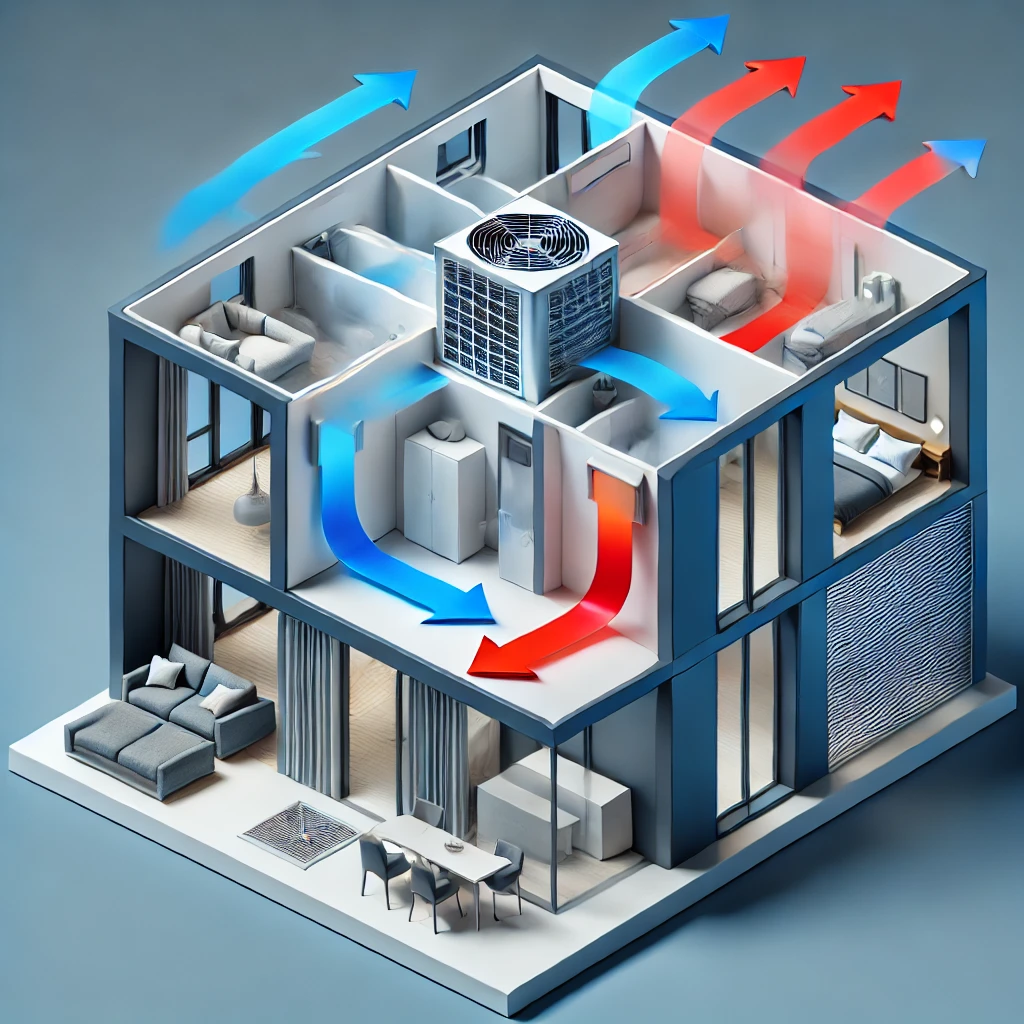In today’s world, we spend a significant portion of our lives indoors. This makes indoor air quality (IAQ) a critical factor in our overall health and well-being. While traditional HVAC systems offer a solution, decentralized ventilation systems are gaining traction as a modern and efficient alternative. This article will explore the benefits of decentralized ventilation, how it works, and why it might be the right choice for your home or business.
What is Decentralized Ventilation?
Unlike centralized HVAC systems that rely on ductwork to distribute conditioned air throughout a building, decentralized ventilation systems operate independently within individual rooms or zones. They consist of self-contained units that are installed in walls, windows, or ceilings, providing targeted ventilation exactly where it’s needed.
Key Features of Decentralized Ventilation Systems:
- Independent Operation: Each unit functions autonomously, allowing for personalized control of airflow and ventilation in specific areas.
- Ductless Design: Eliminates the need for extensive and costly ductwork, simplifying installation and reducing energy loss.
- Heat Recovery (HRV/ERV): Many decentralized systems incorporate heat recovery (HRV) or energy recovery (ERV) technology, preheating or precooling incoming fresh air with exhaust air, significantly improving energy efficiency.
- Filtration: Equipped with filters to remove dust, pollen, allergens, and other pollutants from the incoming air.
- Demand-Controlled Ventilation (DCV): Some systems utilize sensors to automatically adjust ventilation rates based on occupancy, humidity, or CO2 levels.
Benefits of Choosing Decentralized Ventilation:
- Improved Indoor Air Quality: Decentralized systems deliver a constant supply of fresh, filtered air, diluting pollutants and improving overall IAQ. This is crucial for occupants suffering from allergies, asthma, or other respiratory sensitivities.
- Energy Efficiency: By ventilating only occupied areas, decentralized systems minimize energy waste compared to centralized systems that condition the entire building, regardless of occupancy. Heat recovery technology further enhances energy savings.
- Zoned Comfort Control: Individual units allow for personalized temperature and ventilation settings in each room, catering to individual preferences and needs.
- Reduced Installation Costs: The ductless design significantly reduces installation time and costs compared to complex centralized systems.
- Easy Maintenance: Maintenance is typically simpler and more cost-effective, as each unit can be accessed and serviced independently.
- Quiet Operation: Modern decentralized ventilation units are designed for quiet operation, minimizing noise disruption.
- Ideal for Retrofits and New Construction: Decentralized systems are a great option for both new construction projects and retrofitting existing buildings, especially those with challenging layouts.
- Reduced Risk of Cross-Contamination: Because air is not recirculated through a central ductwork system, the risk of spreading contaminants between rooms is significantly reduced, contributing to a healthier indoor environment.
Applications of Decentralized Ventilation:
Decentralized ventilation systems are suitable for a wide range of applications, including:
- Residential Buildings: Homes, apartments, and condos
- Commercial Buildings: Offices, schools, hospitals, and retail spaces
- Renovations and Retrofits: Existing buildings where adding ductwork is difficult or impossible.
- Specific Problem Areas: Rooms with poor ventilation or high levels of humidity, such as bathrooms and kitchens.
Choosing the Right Decentralized Ventilation System:
When selecting a decentralized ventilation system, consider the following factors:
- Room Size and Layout: Determine the appropriate unit size and capacity based on the area you need to ventilate.
- Climate: Choose a system that is appropriate for your local climate, considering factors like humidity and temperature.
- Heat Recovery Technology: Decide whether you need HRV or ERV, depending on your climate and energy efficiency goals.
- Filtration Requirements: Select a system with a filter that meets your specific needs, such as HEPA filtration for allergy sufferers.
- Noise Level: Opt for a unit with a low noise rating to minimize disruption.
- Installation Requirements: Consider the installation process and whether you need professional installation.
- Budget: Compare prices and features to find a system that fits your budget.
Conclusion:
Decentralized ventilation systems offer a compelling solution for achieving healthier and more energy-efficient indoor environments. With their ability to provide targeted ventilation, personalized comfort control, and reduced energy consumption, they are an increasingly popular choice for both residential and commercial applications. If you’re looking for a modern and effective way to improve your indoor air quality, consider the benefits of decentralized ventilation.
Keywords: Decentralized Ventilation, HRV, ERV, Indoor Air Quality, IAQ, Ductless Ventilation, Heat Recovery Ventilation, Energy Recovery Ventilation, Ventilation Systems, Air Filtration, Home Ventilation, Office Ventilation, Quiet Ventilation, Energy Efficient Ventilation, Modern Ventilation, Building Ventilation.

